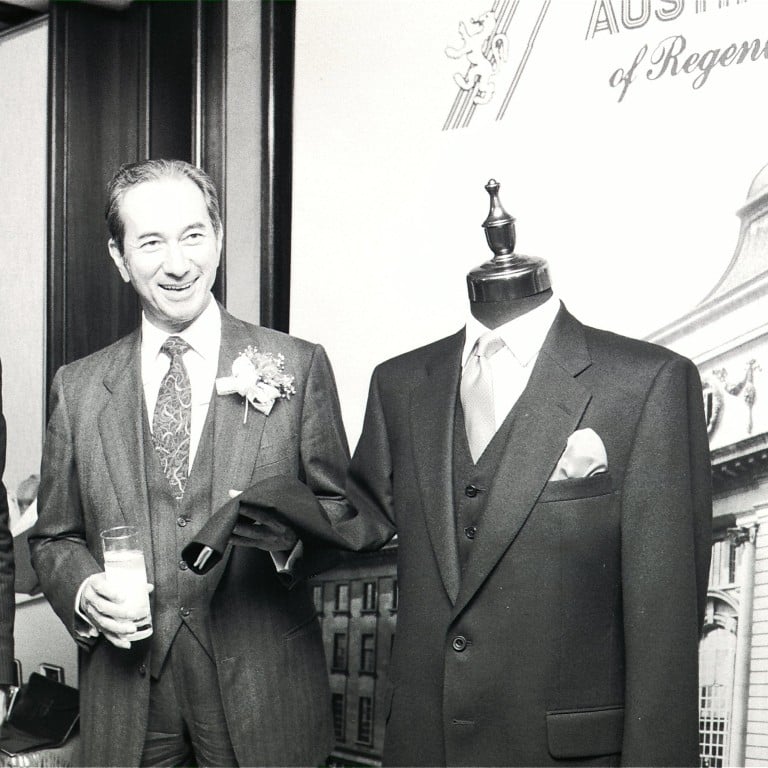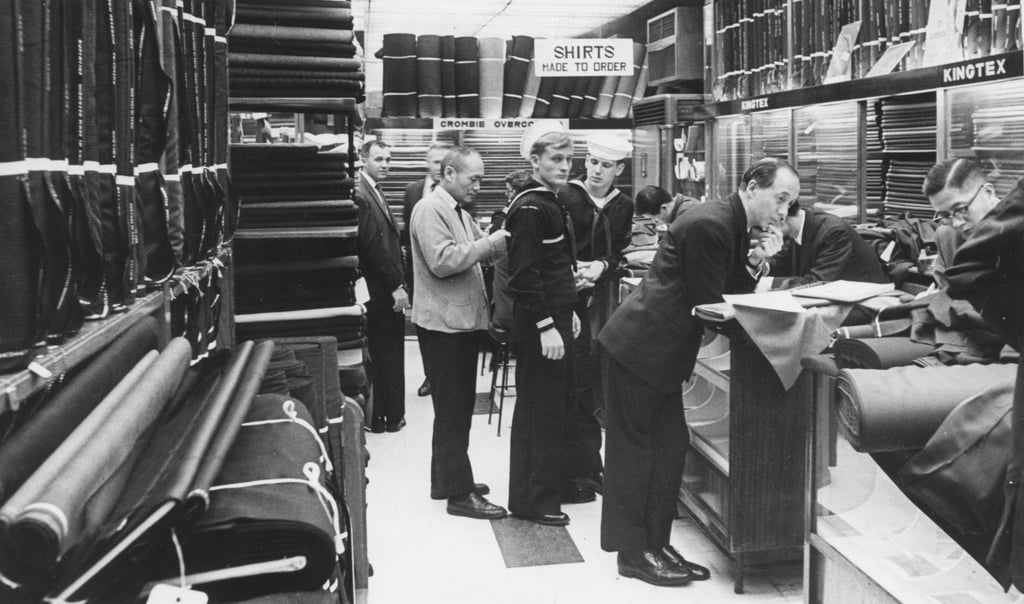From David Bowie to Bruno Mars, old Hong Kong’s tailors made suits for them all – even Giorgio Armani paid a visit to Sam’s Tailor in Tsim Sha Tsui

- After the Opium Wars, skilled Shanghai tailors headed south to form the ‘Red Gang’, competing with the cheaper ‘Guangdong Gang’ of locals
- From George H.W. Bush to Stanley Ho, old Hong Kong’s tailors made clothes for everyone, and a visit to a famous TST shop was once a tourist rite of passage
The historical events that led to the founding of Hong Kong are also at the root of the city’s tailoring culture. It all goes back to the 19th century, the period explored in James Clavell’s epic doorstop of a novel, Tai-Pan, published in 1966.
When China-based British and American entrepreneurs began to accumulate fortunes in the opium trade, tailors from the UK saw the potential for profit catering to these newly affluent individuals.
Sailing east and plying their trade in Shanghai, Ningbo and other treaty ports on the mainland, these globetrotting tailors trained up Chinese employees in the Western styles of cutting, stitching and shaping of cloth. Many adept locals eventually established their own tailoring businesses and taught their own apprentices.

Some decamped to Hong Kong when, in the wake of the Opium Wars, a British Crown colony was founded, bringing with it a sizeable British population, possessing growing wealth and an appetite for sartorial finery (not to mention a mighty thirst for gin and tonic).
In the late 19th and early 20th century, Russian engineers and labourers came to northern China, building the railways that would facilitate trade between Moscow and the Middle Kingdom. They were accompanied by soldiers, merchants, artisans and craftspeople, including tailors, who passed their skills on to local hirelings, just as the British in Shanghai had done.
Between one to two million people are believed to have fled Russia during the revolution of 1917 to 1923, thousands of them arriving in Shanghai. Among their number were numerous members of the aristocracy and bourgeoisie who had been the core clientele of Russia’s better tailors – plenty of whom joined their customers in choosing exile rather than life under the Soviets.

Shanghai remained an important commercial trading centre between east and west in the years leading to the Second World War, with a large British and European community. These expats were dressed by expert Shanghainese tailors, renowned for their superb skills and known as the “Red Gang” (a nod to the red hair of their Celtic customers). Their style of construction involved painstakingly pressing garments to create curvature and give jackets a full, proud chest, which suited the Caucasian form.